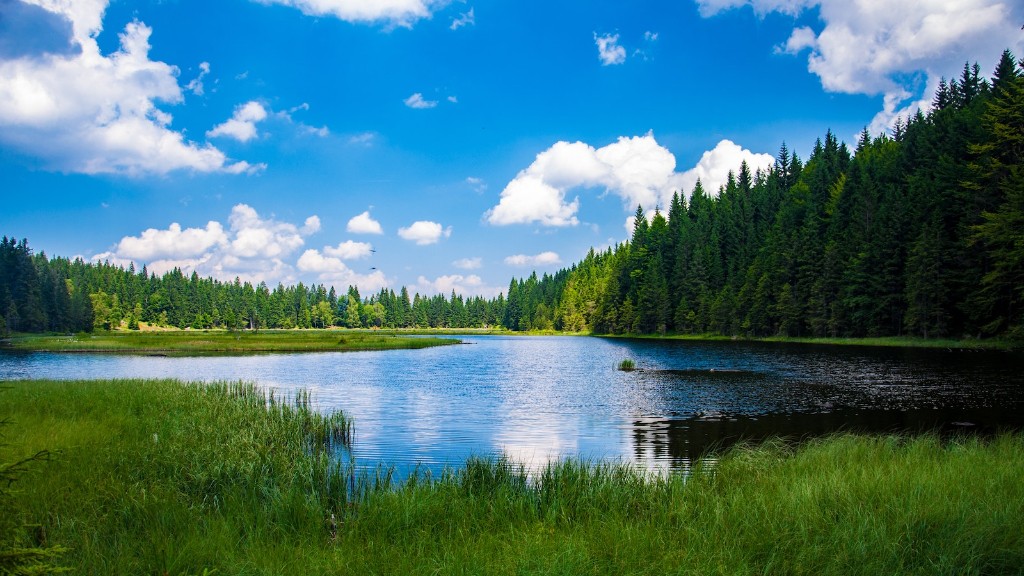Introduction
The Mississippi River is the second-longest river in North America stretching more than 2,320 miles from its source near Itasca, Minnesota, to its delta at the Gulf of Mexico. Along its long journey it passes through or alongside some of the United States' most famous cities, including St. Louis, Memphis and New Orleans. But what body of water does the Mississippi River meet at the end of its journey to the sea?
Gulf of Mexico
The Mississippi River empties into the Gulf of Mexico. This massive body of water stretches 615,000 square miles and is bordered by the United States, Mexico and Cuba. It is the ninth-largest body of water in the world and the largest in North America. The Gulf of Mexico is also connected to the Atlantic Ocean via the Straits of Florida and to the Caribbean Sea via the Yucatan Channel.
Impact of Mississippi on the Gulf of Mexico
The Mississippi River's impact on the Gulf of Mexico is remarkable. The river delivers a huge volume of freshwater and sediment to the gulf along with important nutrients like nitrogen and phosphorus. This adds to the biodiversity, health and stability of the gulf's ecology. The nutrients also support a huge variety of marine life, including vast population of shrimp, fish and crustaceans.
Dead Zones and Hypoxia
Unfortunately, too much nitrogen and phosphorus in the Gulf of Mexico can have adverse effects. The nutrients can cause toxic algae blooms which in turn trigger a process called hypoxia, where oxygen levels in the water drop and threaten the survival of aquatic life. This can create so-called “dead zones”. The Mississippi River contributes up to 70 percent of the nitrogen flow into the Gulf of Mexico and is the major contributor of dead zones.
Pollution Control Strategies
To combat the problem of dead zones in the Gulf of Mexico, a number of strategies have been proposed. These include reducing the use of fertilizer on farms and prohibiting the use of personal care products (like shampoo and soap) that contain nitrogen and phosphorus. Such strategies are being adopted across the Mississippi River basin to reduce the amount of nitrogen and phosphorus entering the Gulf of Mexico.
Restoration Projects
In addition to pollution control strategies, many restoration projects have been initiated to help restore the health of the Gulf of Mexico. These projects include restoring the mangrove forests, reducing soil erosion, controlling runoff from land and restoring important wetland areas. Such projects are helping to reduce the amount of pollutants flowing into the Gulf of Mexico and are improving the health and biodiveresity of the surrounding areas.
Impact of Climate Change on the Gulf
Climate change is also having an impact on the Gulf of Mexico. Increasing temperatures can cause sea levels to rise and hurricanes to be more severe. Higher temperatures can also lead to more frequent and intense algae blooms. Warmer waters can also reduce the oxygen levels in the gulf and further reduce the biodiversity of aquatic life.
Economic Implications
The Gulf of Mexico also has an important economic impact on the surrounding states. The region is home to the largest seafood industry in the United States, providing an important source of jobs and revenue. It is also an important source of fuel and energy, particularly oil and gas. Any changes to the health of the gulf will have a direct effect on the local economy.
Aquatic Life in the Gulf of Mexico
In addition to the wide variety of marine life, the Gulf of Mexico is home to an impressive variety of birds, mammals and aquatic plants. The gulf is an important spawning area for a range of valuable commercial fish species including grouper, yellowfin tuna, snapper and sea bass. There are also a number of protected species including the West Indian manatee, sea turtles, whales and dolphins.
Protection Efforts
The Gulf of Mexico is an important ecological resource and as such there have been numerous efforts to protect and preserve it. The Gulf of Mexico Fishery Management Council is responsible for managing fishing activities in the region. Other initiatives include improving water quality, reducing runoff from land, creating buffer zones and re-establishing natural habitat.
Conclusion
The Mississippi River meets the Gulf of Mexico at the end of its long journey. The river has a huge impact on the gulf, providing important nutrients and sediment, as well as contributing to pollution problems like hypoxia and dead zones. A number of strategies have been implemented to restore the health of the gulf, including pollution control measures and restoration projects. The gulf also has an important economic role and is home to a wide variety of aquatic life. Protecting and preserving the Gulf of Mexico is an important priority for the local and national governments.
